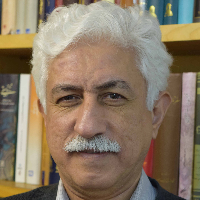The Architecture of Dār al-Funūn School and Its Changes in Qajar Era
Author(s):
Article Type:
Research/Original Article (دارای رتبه معتبر)
Abstract:
Dār al-Funūn School was established in the first half of 1850s, under Nāsir al-Dīn Shāh’s rule and by the patronage of his chancellor Mirzā Taqī-khān Amīr Kabīr. Amīr Kabīr was also the patron of the school building, which its construction began in 1850. Its designer was Mīrzā Rizā Muhandis-Bāshī, who had studied engineering in Royal Military Academy at London. The school’s master builder was Muhammad-Taqi Khān Miʻmār-Bāshī. Amīr Kabīr himself and Bahrām Mīrzā Mu‘izz-al-Dawla supervised the construction of the building. A part of building opened in 1852, just a few days after Amir’s deposal, although it was not totally finished until 1853. However, the building that we know today as Dār al-Funūn was constructed in Pahlavi era. There is almost no important material evidence from the Qajar building, but there are some imagery and written evidences. The Dār al-Funūn building is remained unknown because of some inaccuracy in recognition of photos and their positions, and some changes in the building during the very Qajar era. Our objective is to recognize the school’s architecture and the quality of its probable changes in Qajar period, which is dealt with validation of the documents, recognition of the building physical properties, resolving the ambiguities, lighting up the building changes and evolutions, and determining their dates. According to formal chronicles, the school was opened on 5th Rabi’ I, 1268 AH (Dec. 29, 1851), when Amīr Kabīr was exiled (about two weeks before his murder on Jan. 10, 1852). There are some information in the textual sources including Amir’s letters and the government’s formal newspaper; however, there are no evidence of the school in the two major formal documents that was published about one year after the opening of the school. These are the oldest visual document of the school is August Karl Krziž’s Map of Tehran (Dec. 1858), and the Statistics Account of Tehran. The second map of Tehran in that period is ‘Abd al-Ghaffār’s Map (Aug. 1891). There are also several photos and gravures of the school in Gulistān Archive (Golestan Palace Museum), as well as other archives that reveal some aspects of the school’s architecture. We will show that the Qajar Dār al-Funūn had two parts: the old building and the new one. The old building is the one built in Amīr Kabīr’s period. It was designed by Mīrzā Rizā Muhandis, and was constructed by Muhammad Taqī-khān Miʽmār-bāshī in 1850 and opened in 1852. In 1870s, some of the court members decided to make some changes in the building, which were concentrated on the courtyard facades and the entrance. The designer of the changes was Mīrzā ʽAbbās Muhandis (Mīrzā Rizā’s son) and the constructer was Muhammad Ibrāhim-khān Miʽmār-bāshī (Muhammad Taqī-khān’s son). Between 1858 and 1892, the school was developed by adding a new building at the north side of the old one and at the west side of the telegraph office. The new building was called as “the School of Musics” and “the New School of Dār al-Funūn”. In the early Pahlavi era, both buildings were destroyed and replaced by a modern building designed by the Georgian architect Nikolai Lvovich Markov (1882-1957). This is the building, which is known now as Dār al-Funūn High School today.
Keywords:
Language:
Persian
Published:
Journal of Architecture and Urban Planning, Volume:10 Issue: 20, 2018
Pages:
99 to 128
magiran.com/p1894531
دانلود و مطالعه متن این مقاله با یکی از روشهای زیر امکان پذیر است:
اشتراک شخصی
با عضویت و پرداخت آنلاین حق اشتراک یکساله به مبلغ 1,390,000ريال میتوانید 70 عنوان مطلب دانلود کنید!
اشتراک سازمانی
به کتابخانه دانشگاه یا محل کار خود پیشنهاد کنید تا اشتراک سازمانی این پایگاه را برای دسترسی نامحدود همه کاربران به متن مطالب تهیه نمایند!
توجه!
- حق عضویت دریافتی صرف حمایت از نشریات عضو و نگهداری، تکمیل و توسعه مگیران میشود.
- پرداخت حق اشتراک و دانلود مقالات اجازه بازنشر آن در سایر رسانههای چاپی و دیجیتال را به کاربر نمیدهد.
In order to view content subscription is required
Personal subscription
Subscribe magiran.com for 70 € euros via PayPal and download 70 articles during a year.
Organization subscription
Please contact us to subscribe your university or library for unlimited access!




